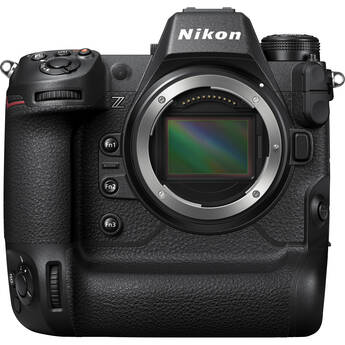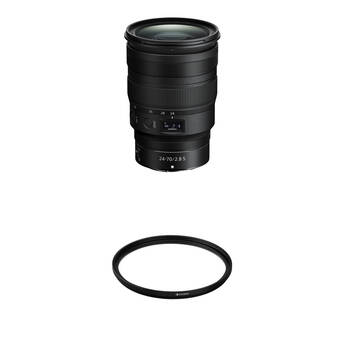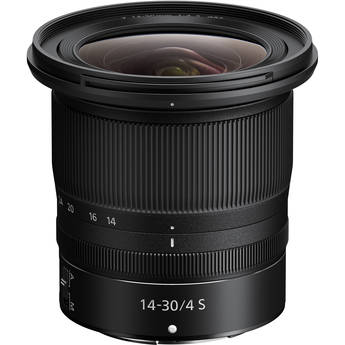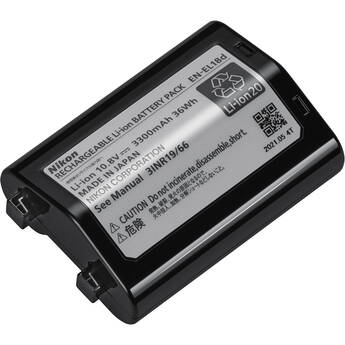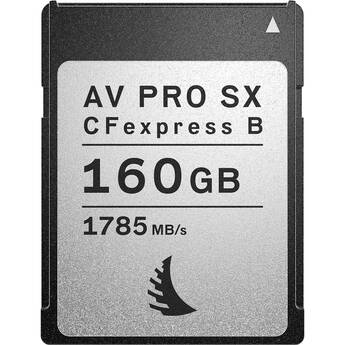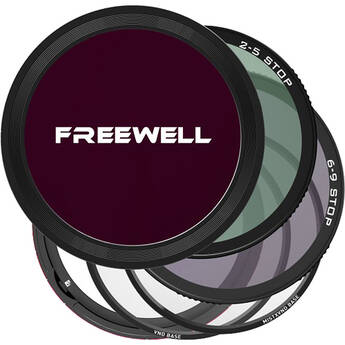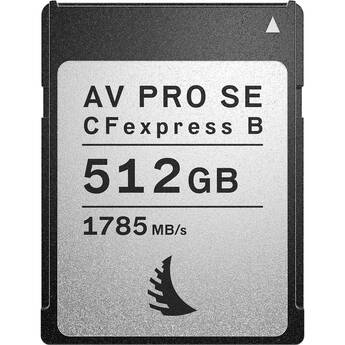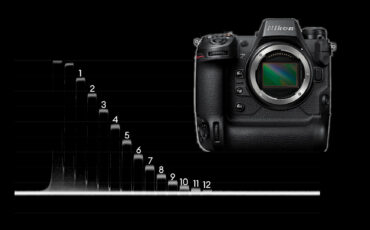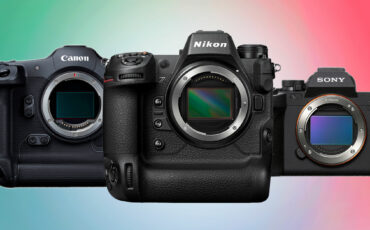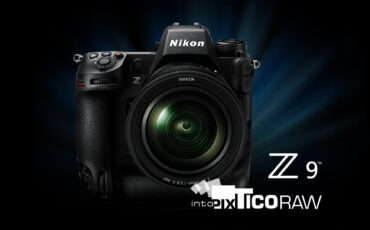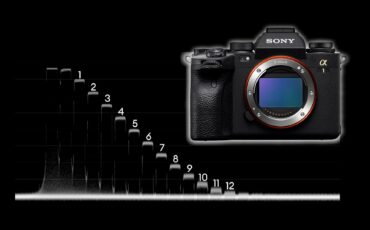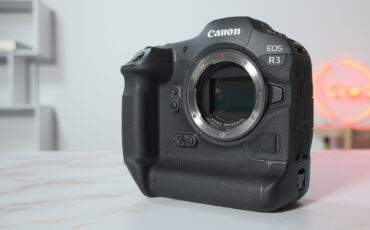Nikon Z 9 Review – Great Camera with a lot more Room to Grow
Music Courtesy of Epidemic Sound
The following Nikon Z 9 review was conducted with a pre-sales camera with having the final firmware installed.
I was fortunate enough to play with the new Nikon Z 9 for a few days and I’m happy to share my first impression with my fellow filmmakers and content creators. With up to 8K/30p and long video recording times next to internal 4K ProRes HQ, this new camera is promising enough to shake the ever-evolving mirrorless cameras market. A future firmware update scheduled sometime during 2022 will enhance its video recording capabilities by adding internal ProRes RAW recording next to N-RAW (for easy editing in DaVinci Resolve). We titled the Nikon Z 9 as our mirrorless camera of the year for video – 2021, so let’s dive into it and see if the title is justified…
Who would have guessed that Nikon, a company known for its traditional business behavior would be the first to introduce groundbreaking video features like Internal 10-bit 4K ProRes HQ, next to soon-to-come 8K60p 12-bit ProRes RAW, and 12-bit N-RAW video recording in their flagship camera. Top this with long 8K recording times and no immediate evidence of overheating issues and we might have a winner here. Logically speaking, Nikon is one of those companies that have no higher video market to cannibalize, yet, in all honesty, I did not imagine they’d go as far as including these video specifications simply because of the full-frame Nikon Z 9 camera is aimed at photographers. Now, before you guys jump and say “this sentence is applicable for all existing photo cameras that can shoot video from other manufacturers”, please allow me to elaborate, a bit further.
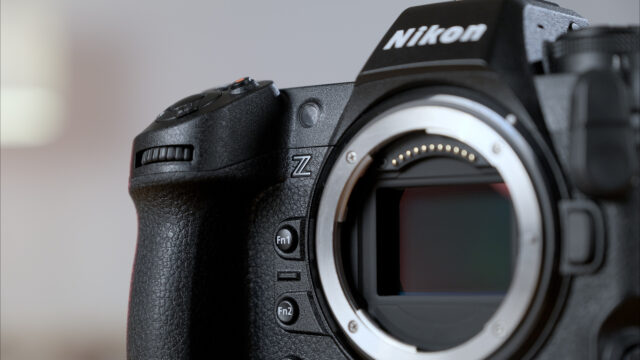
Here is the new camera – what now?
Nikon was kind enough to send us the Z 9, but we only got to keep it for a very short time. Therefore, I had to choose between “waiving the camera around” or moving my lazy bottom and getting myself in front of the camera, doing something along the line of creating a short story. Everything you see in the above video was shot in two consecutive half days, by myself, alone, in the cold…(jokes and self-pity aside, it was a bit challenging but as always, lots of fun)! Technically speaking, I filmed the majority of the footage in 8K/25p and for slow-motion, I used 4K120p, both in H.265 recording codec. (4K slow-motion footage was upscaled to match the 8K timeline).
We mostly talk about how cameras are performing in a warm environment but in this particular case, the camera was outdoor in freezing temperatures for hours and hours and performed remarkably well. It was also nice to see how well the original new Nikon EL-EN18D battery (3300mAh) held up throughout the day! (As you know, the colder it is, the faster your camera battery drains).
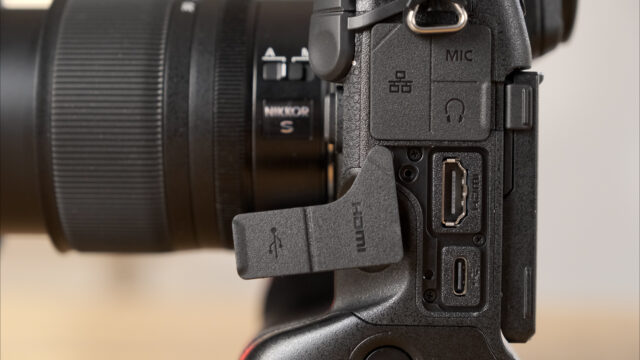
Body design and camera menu structure
The new Nikon Z 9 accommodates the battery within its built-in grip, and although it looks big at first glance when taking a closer look, you will notice that Nikon has done a good job in reducing its size and weight when comparing it to its other flagship professional DSLR camera, the D6. The more I test/work with cameras having an integrated grip, the more I learn to accept that form factor for video work. Maybe it is not for everyone to like due to the larger footprint, yet, I’m convinced that part of the overall “size issue” actually comes from using existing large lenses. Hopefully, future lens releases can bring the high-quality glass in a smaller package.
So as a single shooter, the camera was relatively easy for me to use although I would have appreciated some adjustments. Here is what I gathered while filming:
- Remember I mentioned a camera aimed at photographers? Well, the 3.2″ four-axis LCD screen is a good example. With its current design, there is no way to completely flip/tilt the screen and make it face towards you. This might seem like a “small thing”, but in reality when filming yourself, it is a limitation (in my opinion this desirable recording feature is not reserved for vlogging only).
- Riding on the above limitation, I could only wish the Z 9 to have a front tally light. The way it is now, it is simply not easy to film yourself by yourself.
- Great to see Nikon including a full-size HDMI connector with this camera
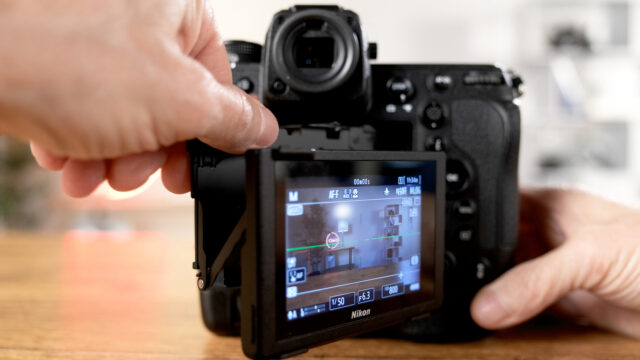
- Allocating the camera shutter release button to be a video recording trigger. As much as I tried, I was not able to find if there is anything like rerouting the REC button. In my opinion, the dedicated REC button is a bit too far (and small) to operate with my small hands.
- Where is the LCD focus indication square? Good question. Yes it is there with thin red (Or green) colors bars, but when filming in daylight it is very difficult to actually find it.
- The camera accommodates two CFexpress Type B card slots. XQD cards can be used too (not tested).
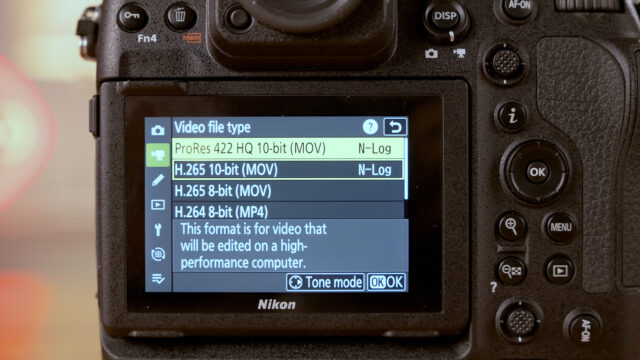
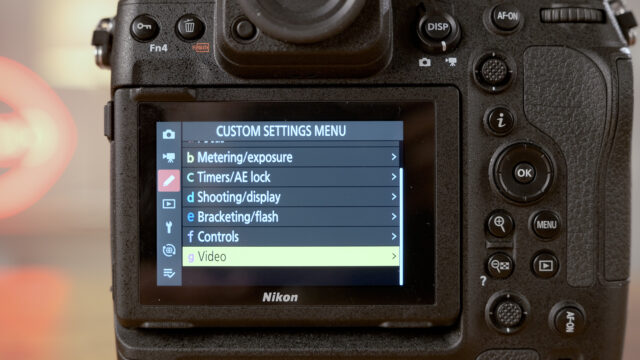
- Being a veteran of asking Sony to work on their camera menu, I’ve learned how easy it is to ask, yet difficult to execute…So now that Sony has moved forward with redesigning their camera menu, it is time to ask Nikon to do the same and migrate ALL video functions under one menu. The current situation is, that one needs to look at (at least) two different menu branches in order to have a full overview of what the camera can offer.
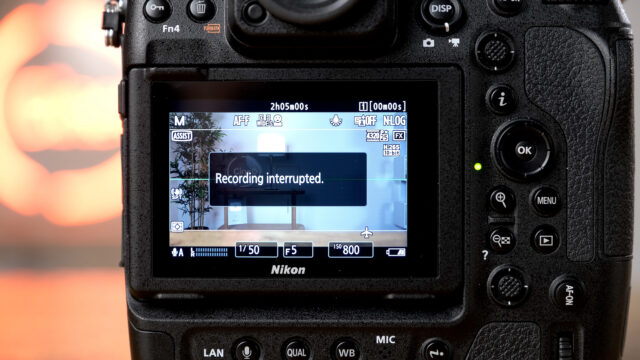
Overheating
The subject of overheating has been discussed inside out, and I’m happy to report that the Nikon Z 9 shows that it can be done differently. The company advertises that in 8K/30p up to 125 minutes can be recorded and I can confirm that the Nikon Z 9 recorded in 8K/25p (H.265 Codec) for 2 hours and 5 minutes in a warm room temperature without any hiccups. I’m also happy to report that the camera body and the Angelbird CFexpress card inside it were both not hot at all!
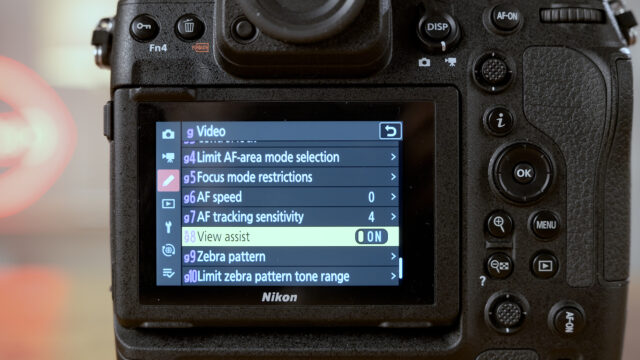
Overall usability
The Nikon Z 9 was a joy to use, but please note the following:
- When filming in N-Log (Flat picture profile), there is a way to activate “view assist” and add “some color and contrast” to your image in order to help with nailing focus and enjoy reacher looking picture. Now, unfortunately, in Nikon’s case, the view assist is not compiling to the REC709 standard but rather simulates Nikon’s Z 9 own picture tone close to “neutral”
- Determine exposure might also not be so easy for some as there is no “light meter” available while being in video mode. (there is Zebra, but personally I’m not using it)
- When in 8K mode, there is no way to “crop into the sensor and enjoy the DX (croped) mode”. Also the electronic image stabilization is not functional so additional image stability when filming handheld is not possible
- On the other hand, in 4K mode(s) DX (2.3 crop) and additional electronic image stabilization are an option although, I suggest using both seldomly due to a decrease in image quality.
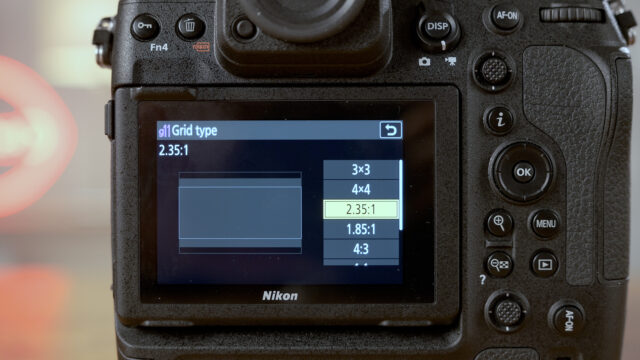
- Grids for marking different aspect ratios can be activated. As I find myself liking to film in 2.35:1 aspect ratio, I appreciate having this option
- Nice to see that the camera has NO PAL/NTSC settings, but rather is open to all frame-rates in a single menu. So for example, when being in a PAL region like where I am now, I didn’t have to “compromise” on 4K/100fps as selecting 4K/120p is easily accessible
- When filming in High Frame Rates, sound is recorded too, which I find very beneficial
- Material that was recorded in high frame rate inside the camera is playing back at normal speed when watching it. A pity as at times, there is a real need to look at the recorded slow-motion footage “at the speed it was recorded in”
- The cameras has a built-in 5-axis IBIS. It relies on giving better stabilization results when workign together with some lenses (Additional 2-axis). Electronic Vibration Reduction (VR) is not functional in all recording resolutions.
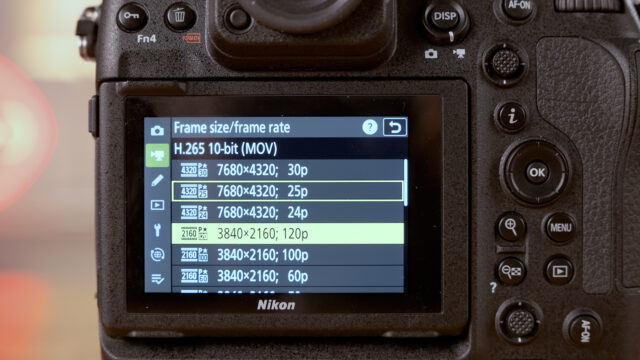
Picture quality
In general, I like what I see coming out of the new camera. In my opinion, Nikon is the one to reproduce nice-looking warm skin tones (apart from Canon). Also, there is an organic feel to the images although, I did not find a way to control noise reduction (or turn it off completely) in-camera if wanted. The Native ISO when filming in N-Log in all codec variants is 800. We asked Nikon if the camera has a Dual ISO capability and were told that: “All ISO sensitivities have been tuned for the best image quality with a combination of analog and digital gains”. So if I got it right, while other manufacturers are using Dual ISO as a “buzz word”, Nikon is working hard to fine-tune and get the most out of any ISO sensitivity. (And I have to say that ISO looked clean in all different sensitivity settings).
My colleague Gunther already conducted and shared his Nikon Z 9 lab test findings, and was truly impressed with its Rolling Shutter performance, but I really want to mention the “elephant in the room” again. While the fast EXPEED 7 processor and newly developed 45.7MP BSI stacked CMOS sensor are working aimlessly together to allow the camera to record video in 8K/4K H.265 and 4K ProRes HQ in 4:2:2, 10-bit internally, it seems as if it is a bit hard for it to fulfill its full picture quality potential. According to our findings, the main issue seems to be the current N-Log gamma curve that the camera uses, or as Gunther describes this in his article:
The currently implemented N-Log gamma curve does not allow to pull up shadows without heavy posterization/banding
Combine it with the supplied official LUT, and you might be disappointed when trying to grade your images. Speaking of which, I, for example, had to skip using the official REC709 conversion LUT as it killed the shadows in my footage altogether. Instead, I used fylm.ai in order to create my own LUT for the above video. BTW, If any of you guys are using any new Nikon camera and filming in N-Log, please share your experience when grading the footage with us.
In our opinion, a new N-Log gamma curve is badly needed and we hope that Nikon will allocate some resources to design one. After all, it will only do justice to their flagship mirrorless camera.
Talking about future updates, 12-bit N-Log RAW and ProRes RAW will follow during 2021 and we will be there to test the camera in our lab again.
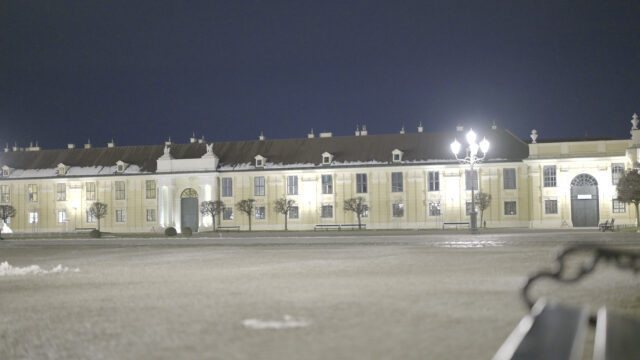
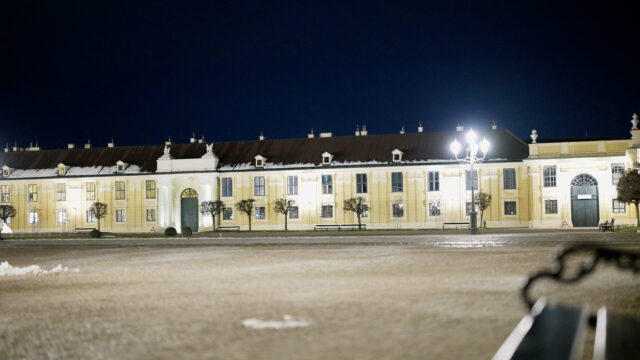
Lowlight capabilites
Like with many other modern full-frame cameras, the Z 9 shows a strong lowlight performance by being capable to satisfy the needs of many, including documentary filmmakers who might find themselves in a situation of filming spontaneously in unexpected places. As far as I’m concerned, working with a higher ISO on this camera does not impose any limitations. In my test, I could easily go all the way up to ISO25,600 and still enjoy a relatively clean image. Now, for the sake of enhanced lowlight performance, do yourself a small favor and try to use a fast lens.
Speaking of lenses, it is still hard for me to use Nikon lenses in manual focus mode as turning the focus ring is “the other way around”… Oh, and the two Nikkor lenses I used in the above video were “purely made for photographers” as their focus throw was extremely short. (Perfect for autofocus, but a nightmare for focusing manually). It is good to see third-party lens manufacturers offering their latest batch with Nikon Z-mount too, so at least, you have choices.
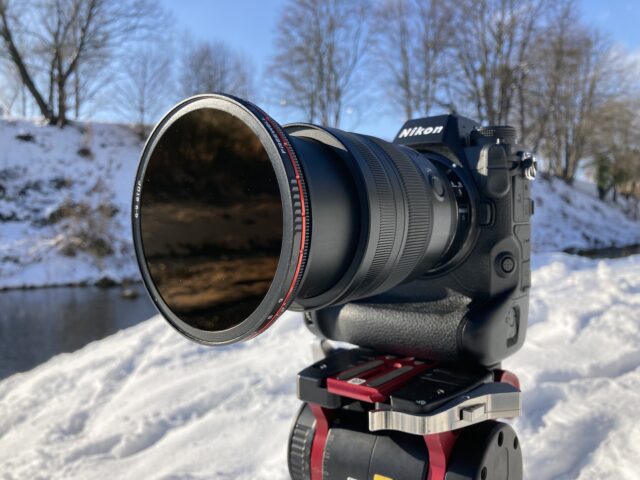
Autofocus performance
During the last few years, we have tested so many cameras from most if not all prominent manufacturers so it is fascinating to see the direction autofocus in mirrorless cameras is heading towards. All in all, Nikon did a very good job here! Full-Time autofocus (AF-F) is my favorite mode, and surprisingly, even my face was recognized (I’m joking). Also, the touchscreen is mostly very responsive, allowing changing the focus points by a touch of a finger.
When checking AF performance, I don’t look at my main subject of filming only, but also at the background, trying to spot those “micro jitter focus changing”. I’m happy to report, that this phenomenon was kept to the very possible minimum while filming.
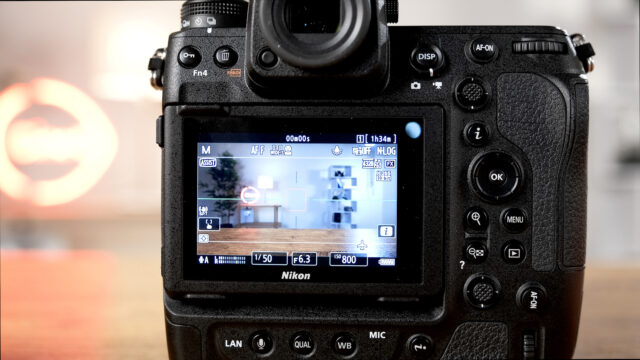
Last but not least, here is a personal request to Nikon: please make the autofocus square more visible. Working outside while using the LCD screen allows very little chance to spot it.
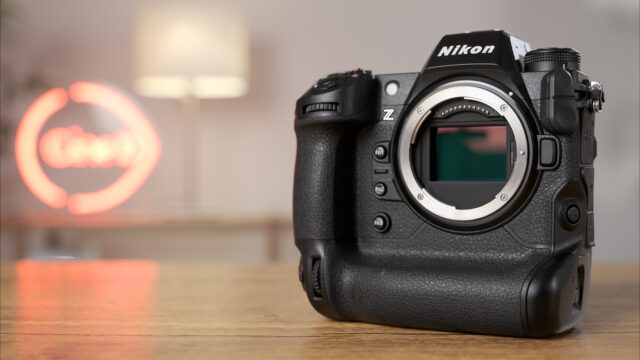
Conclusion
The Nikon Z 9 is a very capable filming tool, one that will be remembered for being the first to include internal ProRes recording in a mirrorless camera (Next to the upcoming Internal ProRes RAW recording). Indeed it is not for everyone, as its size might be an obstacle for some, but let’s hope that the technology found in this powerful filming tool can be scaled down in size to something more compact. Price-wise, it is not a cheap camera in any way, yet, competing very well in its upper class. (The camera is $500 cheaper than the Canon EOS R3 and $1000 than the Sony A1). In any case, this particular model will evolve in time and will offer even greater filming flexibility to anyone who considers purchasing it.
One final note: 2022 will bring a handful of capable, affordable mirrorless cameras to a level that we could only dream about even two years ago… More (filming capabilities) for less (money) might be the name of the game here, so be prepared for EXTREMELY fierce competition fighting over your filmmaker’s heart and pockets.
What do you think about the new Nikon Z 9? Do you see yourself considering it for video production or do you think that Nikon needs to do something additional in order to get your professional attention? Please share with us your thoughts in the comment section below.
